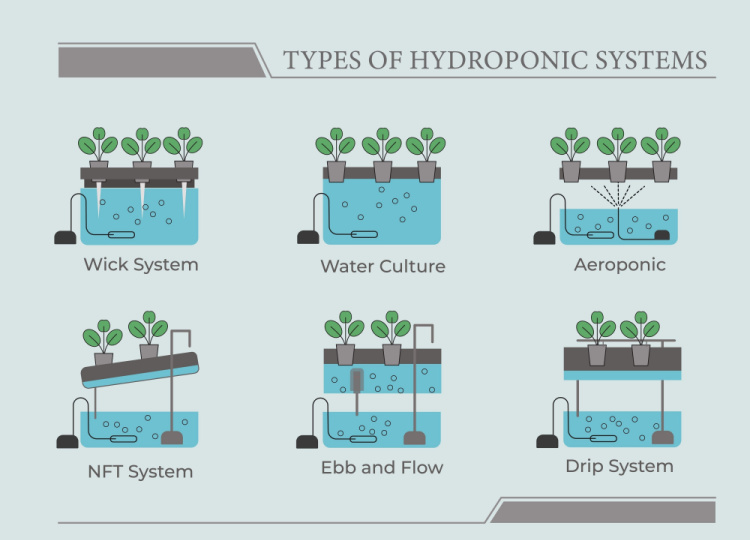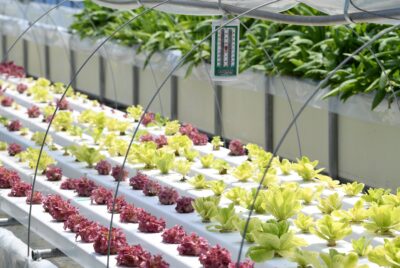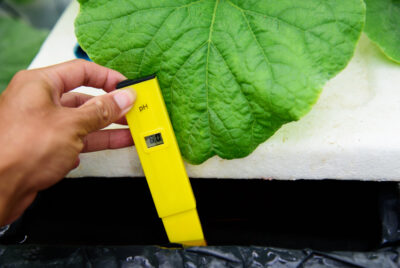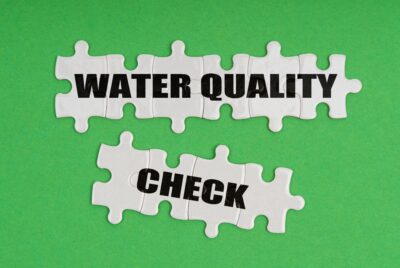Indoor Hydroponic System
We may earn a commision from purchases made using our links. Please see our disclosure to learn more.
Choose The Best Indoor Hydroponic System.
Have you ever contemplated the idea of cultivating your favorite plants and vegetables right within the cozy confines of your home, free from the challenges of traditional soil gardening? Why not step into the world of your preferred Indoor Hydroponic System? To clarify, indoor hydroponics, an inventive gardening technique, enables plants to thrive in a nutrient-rich water solution, eliminating the need for soil. Not only does indoor hydroponics provide a clean and enjoyable gardening experience, but it also represents the future of home gardening.
The Benefits of Indoor Hydroponic Gardening, Space Efficiency
One of the most enticing characteristics of hydroponic systems is their space efficiency. Do you lack a backyard or a balcony? No worries! With a soilless gardening system, you can grow plants in compact spaces, even in a corner of your kitchen or living room. In a world where space is at a premium, hydroponics offers a practical solution for urban dwellers. Additionally, this space-saving feature allows you to maximize your gardening potential without compromising on living areas or outdoor aesthetics.
Year-Round Production
Bid farewell to the constraints of seasons! With indoor hydroponics, you can cultivate your favorite plants throughout the year, regardless of external weather conditions. By using the correct hydroponic propagation techniques, you can say hello to fresh strawberries in winter and tomatoes available anytime you desire. Consequently, enjoy the freedom to enjoy fresh, homegrown microgreens or hydroponic herbs, regardless of the calendar. This year-round production not only provides a consistent supply of food but also enhances your gardening experience by keeping you connected to nature all year long.
Water Conservation
Water, a precious resource, finds an eco-warrior in hydroponic systems. These systems excel in water conservation, boasting a remarkable efficiency gain of up to 90% compared to traditional gardening methods. By reusing and recycling water, hydroponics not only minimizes water waste but also promotes sustainable practices for a greener future. With rising water scarcity concerns, hydroponic gardening provides an eco-friendly solution to safeguard this essential resource.
Healthier Plants
By directly controlling the hydroponic fertilizer balance, plants usually grow healthier and faster. The absence of soil significantly reduces the risk of pests and diseases often associated with conventional gardening. Therefore, embrace a healthier and more vibrant plant life with the precise control and optimization offered by hydroponics. The controlled environment and tailored nutrient delivery systems, like a hydroponic water chiller, contribute to stronger, more resilient plants that thrive without the common struggles of soil-based cultivation.
The Different Types of Water-based Cultivation Systems
Wick Systems
Wick systems, among the simplest hydroponic systems, use a wick to draw nutrients from a reservoir to plant roots. Ideal for small plants and beginners, wick systems offer an easy and accessible entry point into the world of hydroponics. Their simplicity appeals to those exploring hydroponics without requiring complex equipment or in-depth knowledge.
Drip Systems
Meanwhile, these systems provide a slow and steady feed of hydroponic fertilizer to the growing medium surrounding the roots. You can drain or recirculate excess solution, ensuring consistent nutrient delivery for optimal plant growth. Drip systems offer versatility and scalability, making them suitable for a wide range of plant sizes and hydroponic setups like a vertical hydroponic garden
Deep Water Culture (DWC)
In DWC systems, plants hang in a nutrient solution with an air pump oxygenating the roots. DWC systems excel at nurturing fast-growing, water-loving plants, creating an ideal environment for their flourishing growth. By providing ample oxygenation and nutrient delivery directly to the roots, DWC systems promote vigorous plant development and robust yields.
Nutrient Film Technique (NFT)
The NFT system constantly flows fertilizer over roots, with excess solution draining back into the reservoir. This technique is particularly effective for small, fast-growing plants like kale and lettuce. The continuous flow of nutrient-rich water optimizes nutrient absorption and ensures consistent plant nourishment for healthy growth and bountiful harvests. Especially when using a vertical hydroponic garden
Ebb and Flow (Flood and Drain)
Ebb and Flow systems work by periodically flooding the grow bed with hydroponic fertilizer, which then drains back into the reservoir. This versatile system can support a wide variety of plants, providing flexibility and adaptability to different growth stages and plant types. While it requires more management and attention, the ebb and flow method offers greater control over nutrient delivery and promotes optimal plant development, especially with cucumbers. My preferred method with this is a hydroponic flood table.
Aeroponics
In aeroponic systems, plants hang in the air and receive a mist of hydroponic fertilizer solution. This high-tech option demands precise control and monitoring, but it offers exceptional results with faster growth and higher yields. Aeroponics delivers nutrients directly to roots via a mist, enhancing absorption and promoting quick plant growth. This cutting-edge technology combines efficiency and innovation for the utmost gardening success.
Aquaponics
Aquaponics is a natural and mutually beneficial relationship between plants and aquatic animals, forming a self-sustaining ecosystem.
Setting up Your First Indoor Food Production System
Choosing the Right System
When selecting a botanical ecosystem, consider factors such as available space, budget, desired plant selection, and the time you can devote to your indoor garden. Take your time to carefully evaluate each system and its unique advantages before making a decision, ensuring the best fit for your needs and circumstances.
Assembling the System
Once you have chosen your system, it’s time to assemble it! Despite varied instructions, most systems need a reservoir, grow tray, pump or wick, and dependable light source setup. Follow the manufacturer’s guidelines and instructions for seamless installation.
Managing Fertilizer and Light
The proper management of hydroponic fertilizer and hydroponic grow lights is crucial for the success of your indoor garden. As the caretaker of your hydroponic system, it is up to you to provide the essential elements. Utilize a balanced hydroponic fertilizer solution tailored to your plant’s needs and ensure they receive an adequate amount of light, whether, from full spectrum LED grow lights, HID grow lights, or natural sunlight. The appropriate balance of nutrients and the right lighting conditions are fundamental to the healthy growth and productivity of your plants.
Tips and Tricks for Successful Indoor Hydroponic Gardening
Now that you’re prepared to embark on your growing journey, remember to regularly monitor the pH levels of your hydroponic fertilizer, periodically clean your system to prevent algae and disease, and keep a close eye on your plants for any signs of nutrient deficiencies or pest issues. Consider a hydroponic grow tent. When the plants are very young, use a fluorescent grow light.
Embrace the learning curve and enjoy the process, knowing that the rewards of a flourishing indoor garden are truly worth the effort.
Conclusion
In conclusion, an indoor hydroponic system offers an innovative, space-saving, and efficient method to cultivate your favorite plants at home. It opens up a world of possibilities, allowing you to enjoy the benefits of gardening regardless of available space or external factors. Integrating IoT (Internet of Things) devices into hydroponics further enhances these benefits. These smart devices can provide real-time monitoring of nutrient levels, pH balance, temperature, and humidity, ensuring that plants receive the ideal conditions for growth. Automated alerts can notify users of any imbalances, reducing manual monitoring and guesswork. With IoT connectivity, gardeners can remotely adjust settings or monitor their system from anywhere, optimizing resource use and potentially increasing yield. By choosing the right system, assembling it properly, managing hydroponic fertilizer and light, incorporating IoT devices, and faithfully following maintenance practices, you can establish a thriving indoor garden that provides you with fresh produce throughout the year.
FAQ’s
Is indoor hydroponic gardening expensive?
Not necessarily. Though hydroponic setup costs may be higher, they often yield long-term rewards of increased harvests and water conservation.
Can we grow all plants hydroponically?
Most plants grow hydroponically, but certain plants strongly prefer this method. Leafy greens like spinach, herbs, and small fruits like tomatoes and peppers thrive particularly well in hydroponic systems. Therefore, consider the specific requirements and adaptability of each plant before making your selection.
Do hydroponic plants grow faster?
Given the right conditions, and notably, when you’re using a CO2 generator for plants, hydroponic plants can potentially grow up to 50% faster than their soil-grown counterparts. The controlled environment and precise nutrient delivery in hydroponic systems contribute to this accelerated growth. Optimal temperature, humidity, and nutrients let hydroponic plants thrive, enabling faster growth and quicker, abundant harvests.
Can I use regular fertilizers in my hydroponic system?
No, regular fertilizers lack the essential elements necessary for hydroponic growth. We highly recommend using specially designed hydroponic fertilizer solutions. These precisely balanced formulations meet the nutrient requirements of hydroponically cultivated plants, ensuring optimal growth and productivity.
Can I use these Soilless Culture Systems in a greenhouse?
Yes, they all can be used in greenhouses.
Is there a cheaper alternative?
Yes, there are passive systems that allow plants to absorb water and nutrients at their own pace. One is the Kratky method, the other is the wick system. Neither depends on pumps and timers.
Can you use these hydroponic systems outside?
Yes, most definitely.
Are hydroponics systems the same as an aeroponics system?
Aeroponics is a high-tech variation of hydroponics that uses a misting system to deliver hydroponic fertilizer directly to the plant roots. Hydroponics provides precise nutrient delivery, ease of maintenance, and overall simplicity, making it an excellent choice for beginners.





Comments are closed.